I stepped outside yesterday to see these tiny Iris reticulata had bloomed overnight. It’s amazing what a shock to the eyes a three-inch tall purple plant can be after acclimating to a winter’s color palette of brown, gold and grey.

Even more interesting is that these iris are blooming within days of when they bloomed last year, which I find fascinating because last winter was abnormally warm and this winter has been record-breakingly cold. I would have expected the flowering bulbs to be a bit delayed, but I guess once those longer daylight hours hit there’s no holding them back, whatever the weather.
I am very excited for this spring in the garden. I did a lot of work last spring and summer adding new perennials and moving things around, and last fall I planted a bunch of exciting new bulbs. It’s going to be fun to see how this all comes together this year.
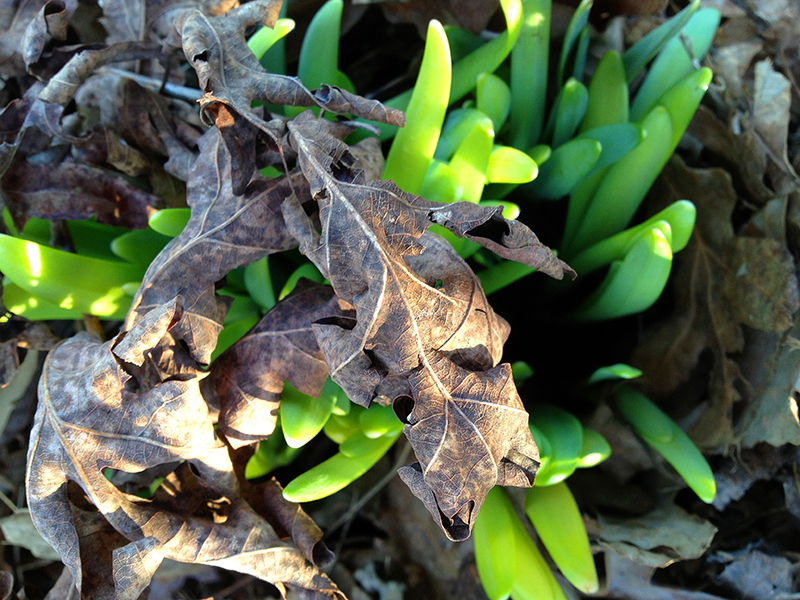
The daffodil and iris planted in the woods are also emerging from their warm blankets of fall leaves. I am really curious to see if the iris actually flower. They’re all from the truckful that my friend Todd donated to the farm last spring. I had way too many to plant around the house so they went rogue and joined the woodland garden.
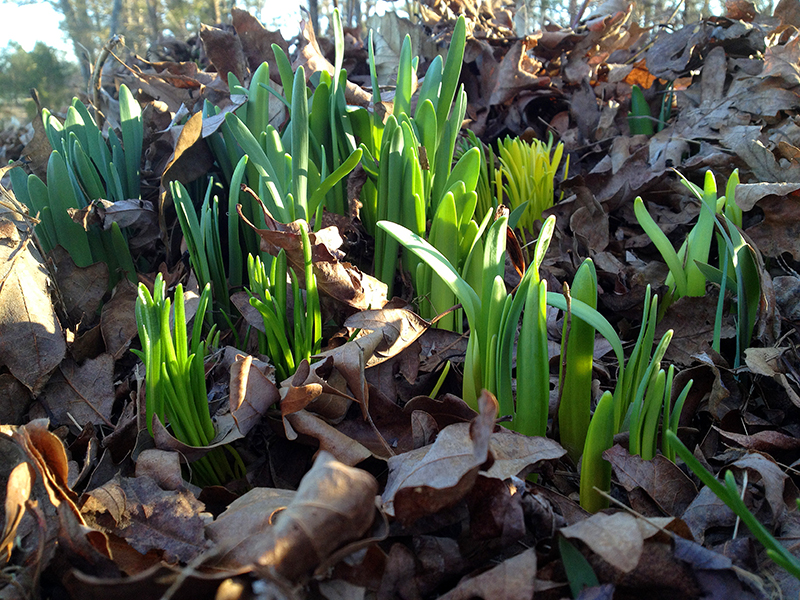
And tonight I heard the first spring peepers of the year! That is definitely the sound of spring,
“Gardening” is a bit of a stretch for what I did today as I walked the property, but it’s all I can do. With everything cold and sleeping, today’s tasks included checking staked trees for girdling and rodent attacks. I scraped a liquified but frozen dead mouse (mousesicle?) out of the crawlspace entry, and pruned still-more cicada damage out of the dogwoods. Most of my time was spent shoveling and sweeping the house garden’s mulch and compost back into place. The chickens are doing their winter thing, which is scratching in the loosest, most fertile and worm-filled soil of the acres they have access to—which happens to be in my garden. Of course. All this chicken activity exposes the prenatal tips of spring flowering bulbs, all pale and startled-looking to be so untimely unearthed.

So I go around and cover these little tips with compost and try to move and pat everything into place with reassurances: “Not quite yet, naked ladies, hold tight for a few more months and if any of those chickens take a nip, bite back.” Even as I tuck these shoots away it’s hard to contain my excitement that something’s happening under the dirt. Those promises sowed in November are halfway toward realization.
I’m itching to take the pruners to some of the standing dead perennial foliage that’s dragging the ground, but I learned my lesson last year when I lost track of where I’d planted certain things and smothered them under a new mulch application. So the stragglers stand, marking the location of my plants at least until I get the spring mulch down. I’m trying to view these dried-out sticks and seed heads through the naturalistic lens of some of my favorite garden designers, who design entire landscapes to be appreciated just like this in winter.
The best-looking thing in the garden right now is almost microscopic: my sedum. Sedum “Angelina” has taken on fantastic rainbow colors, and some unnamed small pink sedum is positively fluorescent.
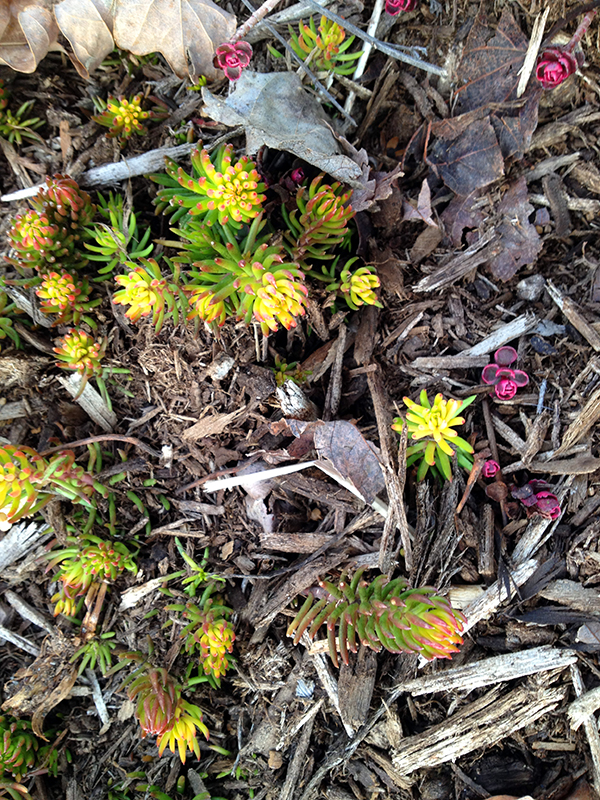
It looks like the polar vortex of a couple weeks ago has already claimed some casualties. My Distylium “Blue Cascade,” which is being heavily marketed as an evergreen landscaping shrub suitable for zones 6b-9, is showing an aesthetically distressing but intellectually interesting pattern of winter burn that wasn’t there before we had our flirtation with zero degrees.
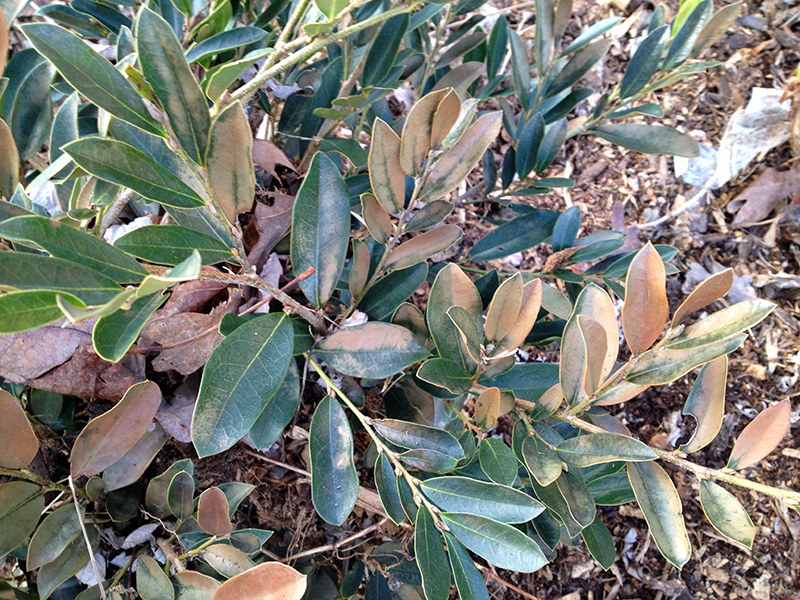
It will be interesting to see how it recovers—good thing I stuck just two of these shrubs in to trial instead of relying on them to carry an entire foundation planting.
And one of my two large clumps of rosemary decided that zero degrees just isn’t a Mediterranean climate, and it’s begun to brown out in a serious way.
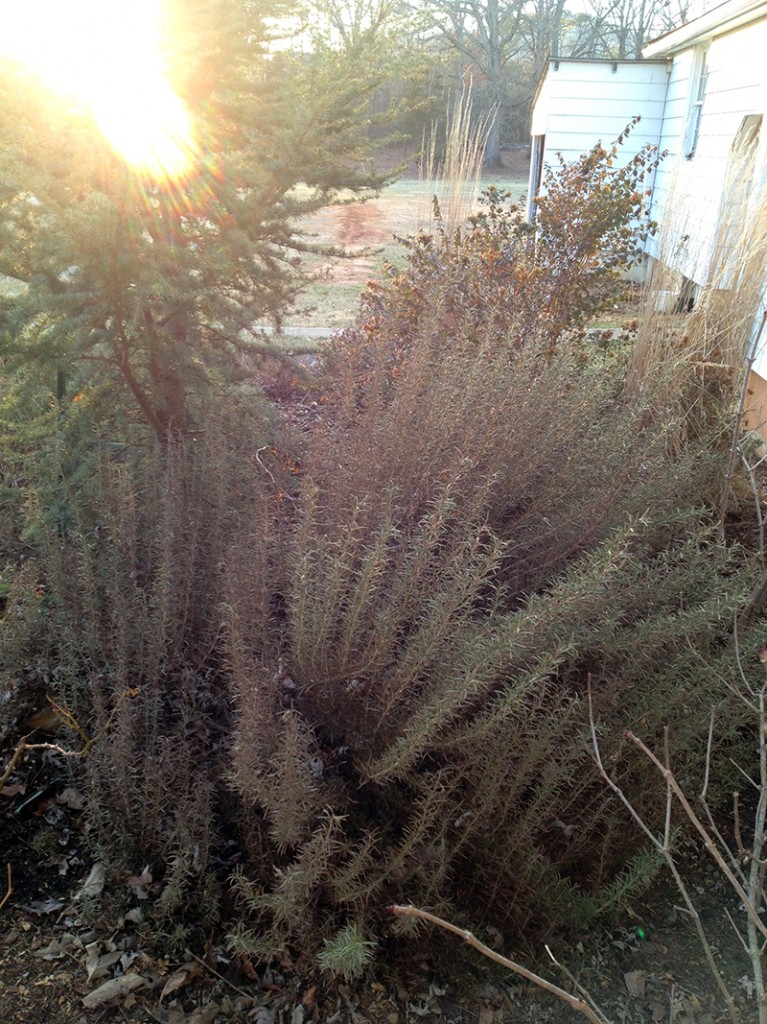
I admit that this big clump, which began as three smaller plants, wasn’t in peak form heading into winter. It had some sort of mite infestation that, while it wasn’t killing it, wasn’t exactly helping things. The interesting thing is that the other rosemary grouping, less than 20 feet away on the other side of the front walk with a similar exposure, evaded both the mite problem and the damaging effects of the polar vortex. Just like humans, plants with healthy immune systems are better able to withstand environmental stressors.
Is it sick to be excited to rip out the rosemary and have a nice big section to fill with something new? I didn’t ever plan for rosemary to become a foundation planting for me—I wasn’t expecting it to be winter hardy here—but it was (for a while!) and once it got big and took up space and stayed greenish through winter, I let it live. But now that it’s brownish, I have no compunction about pulling it all out come spring. As I’ve said before, I like taking things out of the garden more than I like putting things in. It’s a great feeling to give myself permission to correct course midstream, experiment, modify and adapt, and put new knowledge into practice through good editing.
What a wonderfully evocative/apocalyptic name for this weather phenomenon affecting much of the U.S.! Central Virginia is being swirled into its embrace as I write. The temperature dropped 16 degrees in the last three hours, and the thermometer outside my kitchen window now reads 10 degrees at only 9:00 p.m.
This evening I turned on a red heat bulb in the chicken coop. As long as they have access to unfrozen water and plenty of food, chickens are just fine in low temperatures without supplemental heat—they snuggle close together on the roost and they are, after all, walking around wrapped in feather duvets. But with projected temperatures near zero with a wind chill warning, tonight I figured I would help them out a little bit by closing up their windows and heating their coop. It’s very rare that I use heat in the coop—in my climate it’s really not necessary.
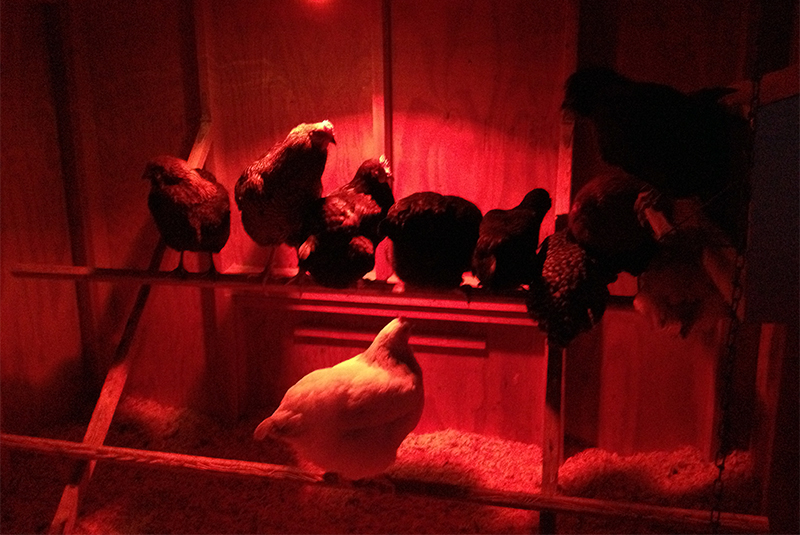
If you’re considering heating a chicken coop with a light bulb, make sure the fixture is securely installed and not just precariously hanging. The risk of fire is too high otherwise. One of my friends burned down his garage when a light fixture he’d suspended over a broody box of chicks fell into their bedding. Imagine just how fast a wooden coop filled with pine shavings would go up in smoke should a lit heat bulb fall into the bedding. That would be one hell of a rotisserie!
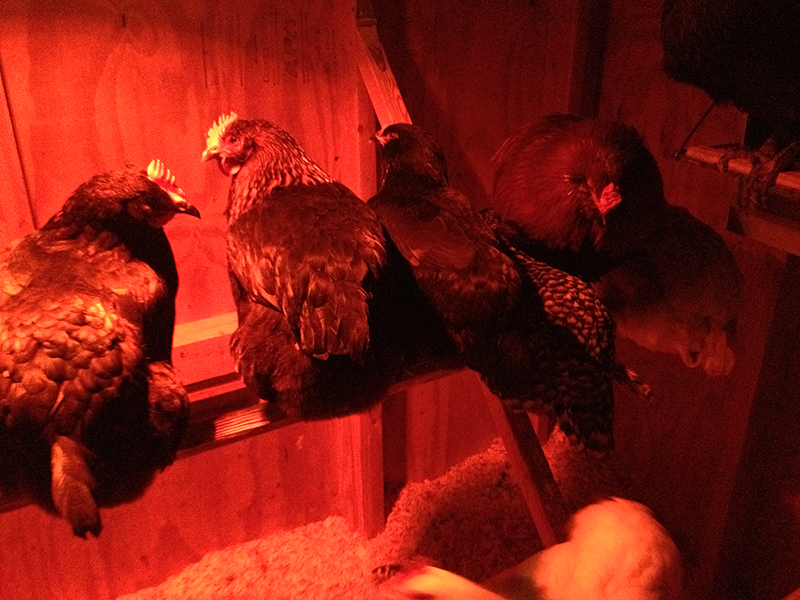
I nailed my light fixture to a rafter and used cable clips to secure the extension cord that powers it to the walls, safe from being pulled down by either people and chickens. The set-up has worked great thus far, and even though I rarely use light or heat in the coop, it’s wonderful to have it there for these polar vortex situations! Which, by the way, and despite the howling winds, I am loving (from the warm coziness of my woodstove-heated snug little home). I have high hopes that all the ticks, squash bugs, harlequin bugs, bean beetles, etc. that plague my person, pets and garden will be totally obliterated in the next two days. A girl can dream!









